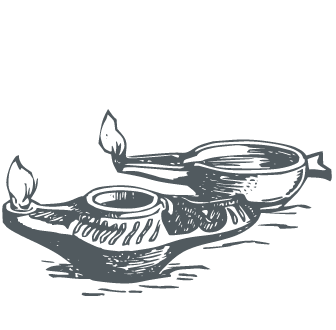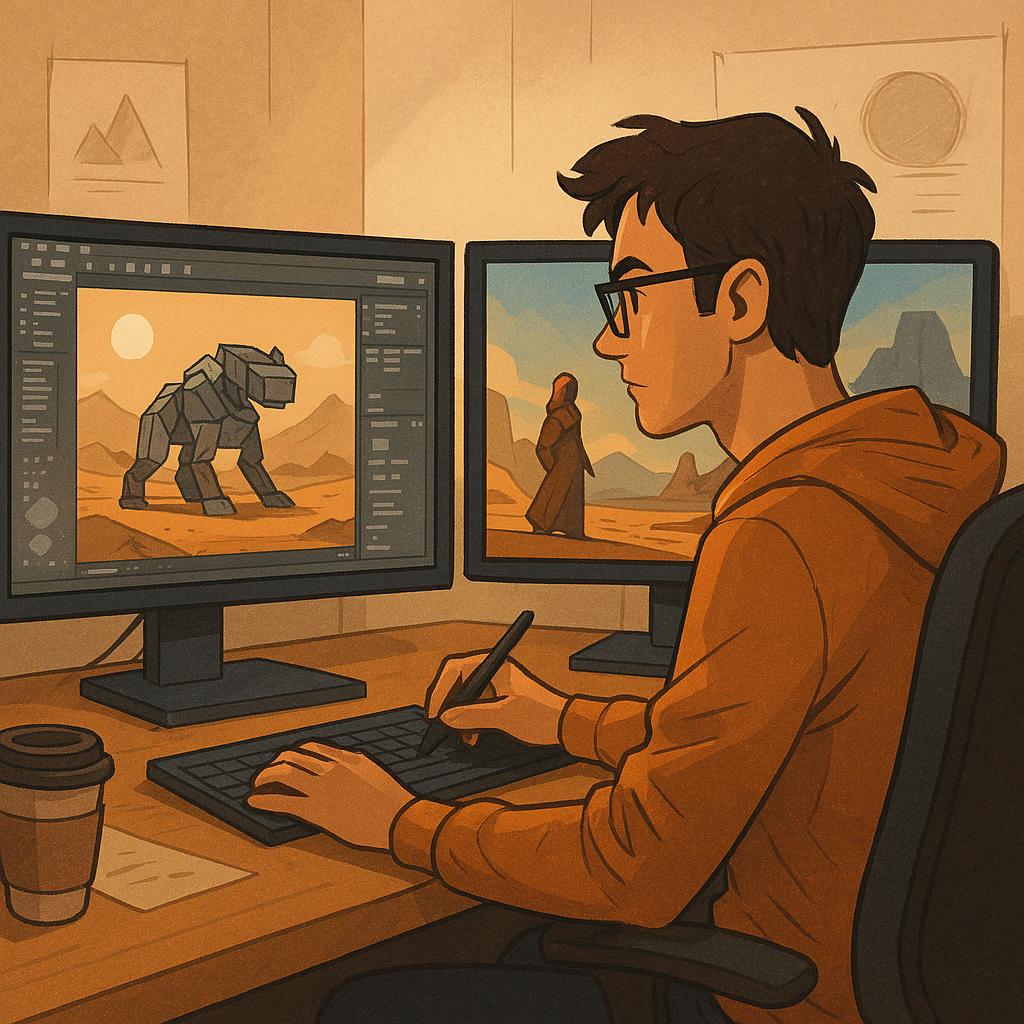In the world of game development, art design services play a crucial role in bringing virtual worlds to life.
However, creating captivating visuals is only half the battle. Game artists must also navigate the delicate balance between unbridled creativity and the technical limitations of game engines, hardware, and budget constraints.
Striking this balance is an art form in itself, requiring a deep understanding of both artistic vision and technical skill. Let’s understand this in detail and see how game art studios use it to their advantage.
The Artist’s Vision: Conceptualizing Worlds
Every game begins with a concept, a spark of creativity that ignites the imagination. Game artists are the visionaries who transform these abstract ideas into tangible assets. They conjure up fantastical landscapes, design memorable characters, and breathe life into the game’s universe.
However, even at this early stage, technical considerations come into play. Artists must consider the game’s intended platform, target audience, and overall aesthetic when conceptualizing designs. Will the game be a photorealistic AAA title or a stylized indie project? These decisions influence the artistic direction and set the stage for the challenges to come.
Case Study: Journey
thatgamecompany’s Journey is a testament to the power of artistic vision. The game’s minimalist, dreamlike visuals were a departure from the photorealism dominant in the industry. Art director Matt Nava explained the thought process behind this stylistic choice in an interview with Gamasutra:
“We wanted to create a world that felt like a place you could go to in your dreams. The minimalist style allowed us to focus on the emotional journey of the player and create a sense of awe and wonder.”
The Technical Canvas: Working Within Constraints
Once the artistic vision is established, game artists must confront the technical realities of bringing their designs to life. Every game engine has its strengths and limitations, and artists must learn to work within these constraints.
Polygon count, texture resolution, and shader complexity are just a few of the technical considerations that artists must balance against their creative ambitions. A highly detailed character model may look stunning in concept art, but could prove too resource-intensive for the game engine to handle.
Optimization Techniques
To strike a balance between visual fidelity and performance, game artists employ a variety of optimization techniques:
LODs Levels of Detail Creating multiple versions of a model with decreasing polygon counts, allowing the game to display less detailed versions at a distance to improve performance.
Texture Atlases Combining multiple textures into a single image, reducing draw calls and memory usage.
Normal Mapping Using high-resolution normal maps to simulate detail on low-polygon models, creating the illusion of complexity without the performance hit.
By leveraging these techniques, artists can create visually stunning assets that perform well within the game engine’s constraints.
Case Study: Horizon Zero Dawn
Guerrilla Games’ Horizon Zero Dawn is a prime example of technical artistry in action. The game’s vast, post-apocalyptic world is filled with highly detailed characters, machines, and environments, all running smoothly on PlayStation 4 hardware.
In an interview with Art Station, lead technical artist Andrew Schneider shared some of the techniques used to achieve this balance:
“We used a combination of LODs, texture streaming, and clever shader work to create the illusion of a highly detailed world while staying within the technical constraints of the hardware. It was a constant balancing act, but the end result was worth it.”
The Collaborative Process: Bridging Art and Tech
Creating visually stunning games that perform well requires close collaboration between artists and technical team members. Effective communication and iterative feedback loops are essential to finding the sweet spot between creativity and technical feasibility.
Artists must work closely with programmers and technical artists to understand the limitations of the game engine and hardware. This knowledge allows them to make informed decisions about asset creation, ensuring that their designs can be implemented efficiently.
The Role of Technical Artists
Technical artists play a crucial role in bridging the gap between art and technology. They are the problem solvers who find creative solutions to technical challenges, enabling artists to realize their vision within the constraints of the project.
From creating custom shaders and tools to optimizing assets for performance, technical artists are the unsung heroes of game development. They ensure that the artistic vision can be translated into a functional, performant game.
Case Study: God of War
Santa Monica Studio’s God of War reboot is a masterclass in collaborative game development. The game’s stunning visuals and seamless gameplay are a testament to the close partnership between artists and technical team members.
Lead character technical artist Mihir Sheth spoke about this collaboration in an interview with 80 Level:
“Communication is key. We have to be in constant dialogue with the artists to understand their vision and find ways to make it work within the technical constraints. It’s a back-and-forth process, but when it clicks, the results are incredible.”
The Future of Game Art: Balancing Innovation and Practicality
As game technology continues to advance, the balance between creativity and technical constraints evolves. New hardware and game engines offer artists unprecedented opportunities to push the boundaries of visual fidelity and interactivity.
However, with great power comes great responsibility. As the potential for visual complexity increases, so does the need for effective optimization and technical artistry. Artists must continue to adapt their workflows and techniques to harness the power of new technology while remaining grounded in the practical realities of game development.
Procedural Generation and AI-Assisted Artistry
Procedural generation and AI-assisted tools are poised to revolutionize the way game art is created. These technologies offer the potential for generating vast, dynamic worlds and assets that adapt to the player’s actions, blurring the line between handcrafted and algorithmically generated content.
However, the role of the artist remains crucial in guiding these tools and ensuring that the generated content aligns with the game’s artistic vision. The balance between procedural generation and authored content will be a key consideration as these technologies mature.
Virtual and Augmented Reality
The rise of virtual and augmented reality presents new challenges and opportunities for game artists. Creating immersive, interactive experiences in these mediums requires a deep understanding of human perception and ergonomics, as well as the technical constraints of VR and AR hardware.
Artists working in these fields must balance the desire for photorealism with the need for optimized, comfortable experiences that minimize sensory dissonance and motion sickness. As VR and AR technology advances, finding this balance will be an ongoing challenge and opportunity for game artists.
Conclusion: The Art of Balance
Balancing creativity and technical constraints is an essential skill for game art design services. It requires a deep understanding of both artistic principles and technical realities, as well as close collaboration between artists and technical team members.
As game technology continues to evolve, the challenges and opportunities for game artists will only grow. Procedural generation, AI-assisted tools, and virtual and augmented reality will reshape the landscape of game development, presenting new frontiers for artistic expression and technical innovation.
However, at the core of this evolution, the fundamental balance between creativity and practicality remains. Game artists who can navigate this balance, who can find innovative solutions to technical challenges while remaining true to their artistic vision, will be the pioneers of the industry’s future.
In the end, the art of game development is the art of balance. It is the delicate dance between the possible and the practical, the imaginative and the implementable. And it is the game artists who choreograph this dance, who bring worlds to life and make the impossible possible, one polygon at a time.
Stop thinking and start moving with Devsinc’s game art design services. With a proven track record of delivering 3000+ projects across 5 continents and 10+ industries, Devsinc is a US-based IT services company delivering digital excellence for more than 15 years.

